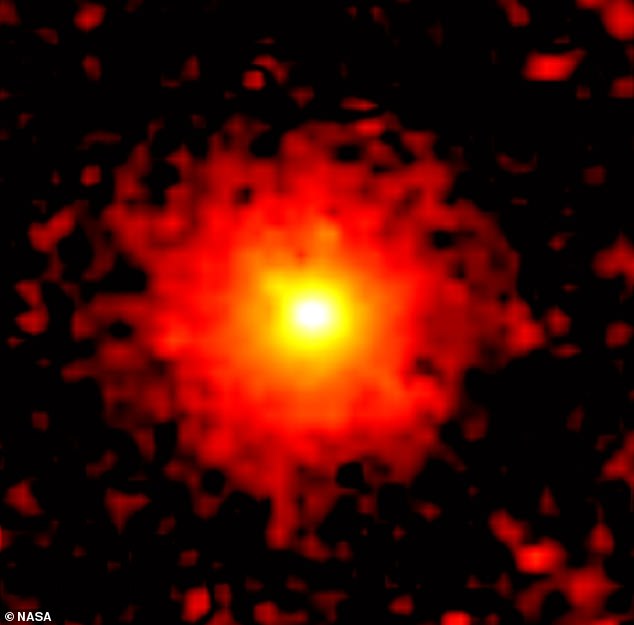The mysterious interstellar object speeding through our Solar System has been spotted shedding metals in a way that defies the rules of a comet.
New observations from the Very Large Telescope in Chile revealed that 3I/ATLAS is emitting high amounts of nickel in its gaseous coma, alongside smaller traces of iron.
The ratio of nickel to iron is far beyond anything seen in comets, even more extreme than 2I/Borisov, the only other well-studied interstellar comet.
Nickel was detected consistently throughout 3I/ATLAS’s activity, while iron appeared only when the comet drew closer to the sun.
Under normal conditions, comets at such distances are far too cold to vaporize the minerals that contain these heavy metals.
‘This is extremely puzzling,’ the study’s authors wrote, noting that the skewed nickel-to-iron ratio challenges existing models of comet formation and activity.
The research team suggested that the unusual metals could come from rare metal compounds, tiny hot spots on the comet’s surface, its original chemical makeup or high levels of carbon oxides.
However, they emphasized that exactly why 3I/ATLAS behaves this way remains a mystery, highlighting just how different interstellar comets can be from those in our own Solar System.

New observations from the Very Large Telescope in Chile revealed that 3I/ATLAS is emitting high amounts of nickel in its gaseous coma, alongside smaller traces of iron
3I/ATLAS is the third known interstellar object observed passing through our solar system.
The first, ‘Oumuamua, was discovered in 2017, followed by 2I/Borisov in 2019.
‘3I/ATLAS formed in another star system and was somehow ejected into interstellar space,’ NASA said in a statement.
‘For millions or even billions of years, it drifted until it recently arrived at our solar system.
It has been approaching from the general direction of the constellation Sagittarius, near the central region of the Milky Way.’
In previous studies, astronomers found nickel and iron in about 20 Solar System comets, but the ratios were much lower and generally matched the sun’s composition.
The new study suggested several mechanisms to explain the metals, including superheating of tiny nickel-rich grains or the sublimation of unusual compounds called carbonyls.
Interstellar comets like 3I/ATLAS offer a rare opportunity to study comet chemistry beyond our Solar System.

The research team suggested that the unusual metals could come from rare metal compounds, tiny hot spots on the comet’s surface, its original chemical makeup or high levels of carbon oxides
Nickel was detected in 3I/ATLAS at a distance of 361 million miles from the sun, even before other elements like iron or cyanogen appeared in the coma.
This may indicate the comet has a rare chemical composition, consistent with earlier observations of its unusually high carbon dioxide-to-water ratio. The team also reported the first detection of iron at 246 million miles.
By measuring the nickel-to-iron ratio at different distances from the sun and comparing it with Solar System comets and 2I/Borisov, scientists hope to determine whether 3I/ATLAS is truly unique.
The team collected the data using the VLT’s UV-Visual Echelle Spectrograph, capturing faint emission lines across a wide range of wavelengths.
After processing the data to remove cosmic rays and background light, they measured the brightness of nickel and iron lines to calculate how much of each metal is in the comet’s coma.
They also measured how much hydroxyl (OH), cyanogen (CN), and diatomic carbon (C₂) the comet was producing to compare its activity and composition with other comets.
These molecules, while not minerals themselves, reveal which ices and organic compounds are present in the nucleus.
The findings could reshape our understanding of how interstellar comets form and how metals behave in the cold reaches of space.
Unlike comets from our Solar System, 3I/ATLAS appears to carry a chemical signature that challenges existing models of cometary formation and activity.
This article was originally published by a www.dailymail.co.uk . Read the Original article here. .

